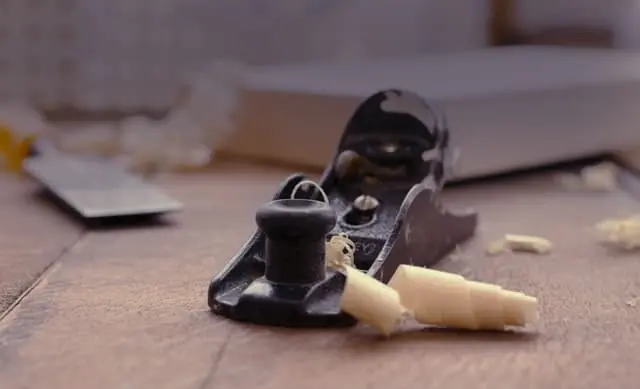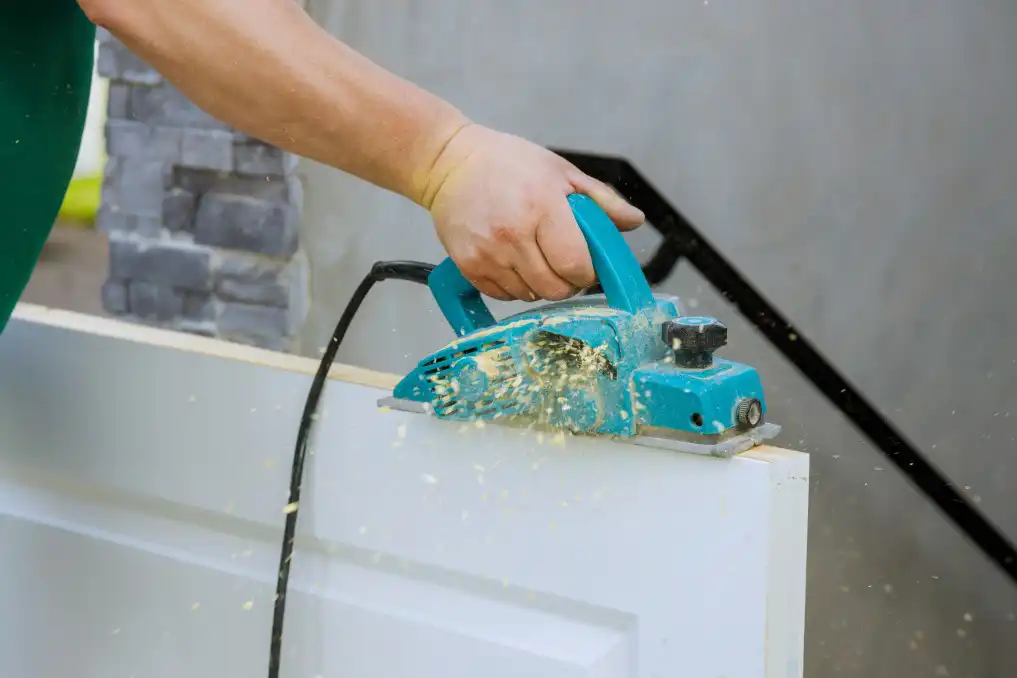How to choose between a Hand planer vs Power planer
Choosing between a hand planer vs power planer comes down to the features of each tool. Study the features each planer tool brings as you match them with your preferences. Hand planers are ideal for shaping, smoothening, and straightening wood. These are traditional tasks that a manual tool like a hand plane can handle. Power planers come with more speed, which requires less manual effort. This article will take you through both planes and help you decide what best suits your needs.
Hand planer
A hand planer is a planing tool used during woodwork whereby the operator uses both hands, manual force, and a steel blade. The blade is so thin that it flattens the edges and corners of the wood. It also smooths out frames.
Use a hand planer to achieve a smoother wood surface, trim off swollen corners of a stuck door for smaller wood pieces with heightened accuracy, make radius cuts, create a symmetrical slope plane, and work on parallel wooden surfaces such as tables and doors or frames. One of its advantages is its portability and ability to work with no electricity or installation.

When using it, grab the knob with one hand and the handle with another. That gives you the grip and steadiness needed to drive it seamlessly across woods. You can also adjust how deep the steel blade cuts through from the knob.
The hand planer is handy, allowing it to fit into a small tool kit. You can easily take your tool to where the work is. There are two hand planers: a manual hand planer and an electric hand planer. handheld planer
Pros
- Ease of use
- Portable
- The manual version works anywhere
- No installation needed
Cons
- A wrong move results in injuries and accidents
- Requires physical labor.
Power planer
A power planer is a woodworking machine that runs on an external power source such as a battery or electricity. Amongst its models are the benchtop planer, power-held planer, and stationary planer.
A power planer is a tool that you can use to reduce wood thickness by shaving it off. It comes with two or three blades and can remove up to ⅛ inch of wood in one pass. What makes it distinctive is portability.

You can take an electric planer anywhere as it is handy and light. You can use this tool in several places where the bench planer may not be possible. You can even use an electric hand planer to reduce the thickness of pre-installed woodwork.
You pass the tool over the workpiece with a hand planer, unlike the table planer, where you have to push the workpiece through the machine. That also means that the power planer is for trimming small wood pieces and minor correction projects.
Pros
- Portable
- Faster
- Versatility
- Ideal for small pieces.
Cons
- Not affordable
- It makes noise
Features
Blade
When using a hand planer, always keep the blade sharp so that the planer cuts. It does not matter if it is still new. It has to be razor-sharp before you put it to use. Planer blades act much like the blade of a shaving razor, scraping off uniform layers of wood (About mechanics.com). You do not need more tools and a flexible budget for the edge.
Amongst your tools is a sharpening stone or sandpaper. You only need practice holding the iron steady at a 25- to 30-degree angle without rocking it, maintaining firm, downward pressure right over the bevel.
Sharpen the hand planer on a wet medium-grit water or oil stone or 220-grit wet/dry sandpaper placed on a dead-flat surface, such as glass. Stroke with a circular motion until you feel a burr on the back of the edge, then flip the iron over to remove the burr by rubbing the back flat on the stone. Repeat the process on a fine stone or finer-grit sandpaper.
When using a power planer, change blades when they become dull. That means you should constantly check the planer blades. Even if you do not notice, a dull blade smokes up the room, the planer becomes difficult to push, and wood debris comes out as sawdust instead of shavings.
Power planers use nicked blades, leaving a groove in the smoothed wood. Avoid tool vibration by installing the blades squarely in the set plate and bolting the drum plate on the cutter head.
Speed
Hand planers are slower than power planers since they use electricity or batteries. When using human effort, you are prone to get tired and slow down, unlike a powered machine. Power planers are timesavers.
With the proper skill and accessories, you can also use power planers for finesse work like beveling door edges, scribing cabinets and countertops, and shaping and tapering wood trim.
Depth Adjustment Wheel
Power planers come with a depth adjustment gauge that enables you to choose your desired thickness which is difficult on hand planers since you have to gauge and measure everything manually.
It adjusts the projection of the iron, which affects the depth of cut and the amount of material removed. Turning it clockwise increases the cutting depth; turning it counterclockwise reduces it. When the blade is correct, it will take a little movement of the adjustment wheel.
What could be better?
Hand planer
- Due to its portability, you can easily have accidents of any unintended moves. More weight on the planer could have been easier to work with.
- Manual work requires more effort and high accuracy. It could have been a bit advanced.
Power planer
- It could have been more affordable.
- It could have been more effective for carving and cutting intricate details.
Similar Features
- Both are powerful tools.
- They are portable.
- Both are for material removal.
Key Differences
- A hand planer requires pressure from the hands, while a power planer uses external power.
- Power planers have multiple accessories and features, unlike manual planer.
- A power planer is faster in operation than a hand planer since it is machine-controlled.
- Power planers come with a depth adjustment gauge that enables you to choose your desired thickness which is difficult on hand planers since you have to gauge and measure everything manually.
The verdict
The hand planer is ideal for precision on a smaller woodwork project. The hand planers are a good start if you are on a low budget and want to explore the woodworking world. Without much experience, you can make good use of the power planer. The hand planer is ideal if your project revolves around smaller wood with extensive details. A hand planer is portable and for maintenance and site work. It would be best to use a power planer if working with rough edges because it has the speed and capacity for material removal. Go for one that would help your work.
- Grain and Sheen: Teak Oil versus Danish Oil Uncovered - January 10, 2024
- The Cherry on Top: Crafting the Perfect Cutting Board - January 9, 2024
- Polyurethane Water-Based vs Oil-Based: Choosing the Right Finish - January 8, 2024